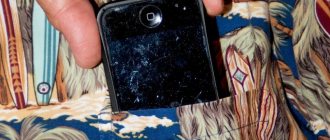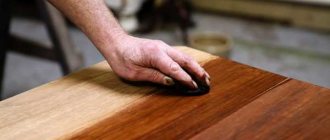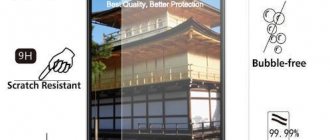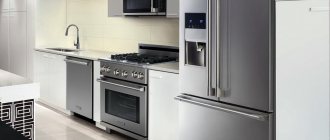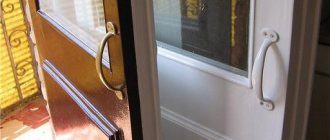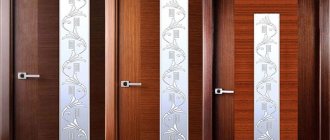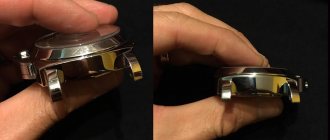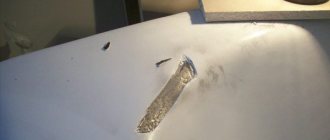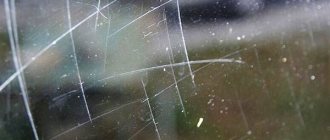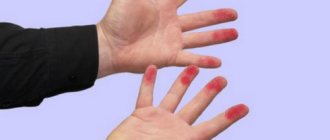Each of us strives to ensure that the bathroom at home always shines with cleanliness and brilliance. Of course, to achieve such a result you need to put in a lot of effort on a regular basis. But, you must admit, washing in a clean room is always pleasant and, what is also important, safe. You can be one hundred percent sure that you are not afraid of either fungus or mold if you take care of it yourself.
Ceramic tiles occupy a large area of floor and wall coverings in the bathroom. Therefore, the question of how to wash tiles so that they give off a pleasant glossy shine is relevant for every housewife. In the article, we will clearly explain how to quickly and efficiently deal with limescale, prevent the spread of mold, and even how to make polish for floor tiles with your own hands and at home.
How to polish tiles?
Over time, the tiles on the kitchen apron stopped shining and became somewhat cloudy.
What can be done to restore its shine, can it be polished somehow? I know the opinion of experts that this is a difficult matter. I also heard that you can try car polishing technology. And they are polished with 3M abrasive paste. One at a time. The paste changes every time.
- Wash the tiles.
- Use paste No. 74 to remove scratches using a hard abrasive wheel.
- Paste No. 75 removes scratches after paste No. 74, abrasive wheel of medium hardness.
- Paste No. 76 removes scratches to a glossy appearance, the circle is soft.
I haven’t used this method myself, so I recommend trying it on a small area of the tiled wall first.
Nowadays this is not difficult to do; there are special tile care products on sale.
Apply the product to the surface of the tile, you can dilute it with water and soak a sponge in the solution.
Wait a couple of minutes, then wash with warm water. The only thing you need to consider is that it is better to work with this product with gloves.
But I would advise you to first try polishing with regular dishwashing detergent (not abrasive), in 99% of cases this is enough to make the tiles shine like new.
If you want to experiment, you can buy a special polishing wax; it is highly respected by car enthusiasts.
Wax will not only give the surface an initial shine, but will also protect the tile from dust, dirt, and so on for a long time.
In general, washing the tiles once a week with a cleaning agent is enough to keep them looking like new all the time.
Naturally, even if a detergent is used, the surface is washed with clean water and completely dried.
Tile is not wood or a car; the word “polishing” does not really apply to it.
Methods for restoring porcelain floor tiles
Selection rules and main types of porcelain tiles for floors
Regular proper care of ceramic floor coverings and the use of protective compounds significantly prolong the wear of the floor covering. But long-term use still inevitably leads to the need to restore the surface. The main method of restoring a porcelain stoneware floor surface is to deep grind the facing material. In small areas, it is possible to polish porcelain tiles with your own hands, although preference is given to the services of professionals who, using specialized equipment, can give the floor cladding its original appearance.
Grinding
A feature of many types of porcelain stoneware is the deep structure of the tile substance. This makes it possible to sand the top layer of the coating (up to 0.5 mm) without changing the decorative texture. Complete restoration of porcelain stoneware, carried out by professional teams, consists of several successive stages.
- Repairing large damage, removing grout between tiles and filling the joints with fresh mortar.
- Mechanical leveling of the floor surface with removal of significant unevenness (coarse diamond abrasive is used).
- Fine grinding of porcelain stoneware coating, with each subsequent pass the abrasive grain size decreases.
- Polishing the surface using a fine-grained abrasive paste, during which minor scratches and abrasions are removed, and the original color and shine of the cladding are restored.
- Treatment of porcelain tiles with hydrophobic compounds that repel water and increase the resistance of the material to various organic pollutants and chemically active substances.
Professional polishing of porcelain tiles has different prices, depending on the region and the range of additional services. The cost of work for one of the companies is shown in the table.
| № | Name of service | Cost in USD per m2 |
| 1 | Cleaning and sanding porcelain tile flooring | From 10 |
| 2 | Deep processing of porcelain stoneware coating | From 20 |
| 3 | Treatment with hydrophobic impregnation | From 15 |
| 4 | Cleaning the porcelain stoneware coating from heavy dirt followed by polishing | From 15 |
Restoration of scratches and chips
To seal large damage on the surface of porcelain stoneware, those that cannot be corrected by grinding, the sealing method is used. The basis of the material for such restoration of porcelain tiles is usually one of the types of polyester glue. By adding various dyes to the glue, a mastic is prepared that can not only firmly seal a pothole or large crack in an artificial stone, but also reflect its texture as accurately as possible so that the seal in the coating is minimally noticeable.
At home, it is possible to restore large damages with epoxy glue, which is almost as strong as artificial granite. However, it can be difficult to choose the right color and decorative parameters on your own.
How and with what to clean floor tiles and ceramic tiles from plaque in the bathroom and kitchen
Each of us strives to ensure that the bathroom at home always shines with cleanliness and brilliance. Of course, to achieve such a result you need to put in a lot of effort on a regular basis. But, you must admit, washing in a clean room is always pleasant and, what is also important, safe. You can be one hundred percent sure that you are not afraid of either fungus or mold if you take care of it yourself.
How and with what to clean bathroom tiles: commercial and folk remedies
There are a large number of tile cleaning products available. Knowing some secrets, choosing the right cleaning composition and watching the video, you can not only remove whitish stains from the surface of the tiles that hard water leaves, eliminate mold from the seams, but also eliminate unpleasant odors in the bathroom, replacing them with a refreshing aroma.
Methods for removing limescale
On store shelves there is a wide range of products for cleaning tiles in the toilet and kitchen. They all do the job well when used correctly. The main brands you may come across include:
Tip: Do not use powdered abrasives for cleaning. Their use will inevitably lead to the appearance of small scratches on the surface, which is why even completely new tiles will quickly cease to shine. It is better to stick to bottles with creamy and liquid formulations.
If you are looking for something to clean bathroom tiles with, then pay attention to an important nuance. When choosing a special store-bought product, you must first read the instructions and make sure that this product is suitable specifically for washing tiles. It is also important that you like the smell of the composition. Some manufacturers make it more pronounced, others, on the contrary, make it neutral.
Remember that certain components used in industrial household chemicals can cause severe allergic reactions in humans. Carefully study the composition of a store-bought product before purchasing it, and be sure to use gloves during the washing process.
It often happens that cleaning is in full swing, but the necessary product is not at hand. Experienced housewives have tips on how to clean bathroom tiles from plaque. In this case, folk recipes for combating plaque on tiles will come to the rescue:
- A simple soap solution helps to clean the tiles if the dirt is not extensive and has not yet become very ingrained. After treating the walls and floor with this composition, it is necessary to wipe the surfaces dry.
- A universal bathroom cleaner is regular table vinegar. Using a spray bottle, apply the acid to difficult areas, leave for a few minutes to work, and then proceed to vigorously clean the surfaces with a soft, damp cloth.
- If the dirt on the tiles is quite serious, apply a little baking soda to them before spraying with vinegar. Thanks to the chemical reaction that occurs, the lime deposits will soften and will be easy to wash off with a regular sponge.
- Citric acid can also remove stains on tiles. Dissolve 10 g of crystals in a glass of hot water, apply the composition to problem areas in the bathroom and leave for 10 minutes. After the allotted time, walk over the tiles with a damp cloth, removing dirt and residue, and then wipe the surfaces with a dry cloth. This will avoid the appearance of streaks.
Mold removal
Most often, fungus appears not on the ceramic itself, but in the seams between the tiles. As in the case of plaque control, manufacturers offer the consumer a range of products designed to quickly and efficiently eliminate dangerous fungal colonies. But, as practice shows, these compositions have a number of disadvantages:
- are expensive;
- Not suitable for everyone, as there is a risk of allergies;
- they are not always at hand at the right time.
Therefore, it is often easier and more effective to turn to traditional methods of mold removal. You can deal with it using a regular toothbrush, previously soaked in vinegar or alcohol solutions. Walk well over all problem areas, leave the composition to act for 5-7 minutes, and then, using a damp cloth, remove any dirt. The result will appear immediately, the mold will disappear. After completing the procedure, remove any remaining moisture with a dry cloth.
Important: do not use hard metal brushes or sponges to eliminate fungus. This will cause severe scratching and damage to the ceramic surfaces.
Removing large scratches and large chips on tiles
Large chips are unlikely to be masked with paint. Of course, the chip and scratch will match the tone of the tile and will become less noticeable, so, as a last resort, this is what you should do. But if possible, it is better to carry out a more thorough renovation, especially since it will not require anything special.
You need to stock up on alabaster, which is used to restore tiles. Alabaster can be used to fill even the deepest scratches and cracks in tiles. If you try, you can restore a corner or edge of a tile that has been completely knocked off. And only after that the repaired tiles are sanded with sandpaper and then painted with acrylic paint or ceramic paint.
The quality of tile repair will depend entirely on how well you choose the paint. Ideally, the paint should be the same color and shade as the tile. This can be achieved if you use special dyes for paint, which are added to the paint in the right quantities.
It’s not easy to guess the ideal amount of dye, but you can conduct several experiments in an inconspicuous area, somewhere behind the furniture, and choose a shade that matches the shade of the tile as closely as possible.
The rules for operating a glass-ceramic hob include not only constant proper care and maintenance of cleanliness, but also the use of suitable utensils. Failure to comply with these rules can lead to the appearance of defects that spoil its appearance. Even small scratches on a glass-ceramic hob immediately become noticeable, so if they occur, immediate action should be taken.
How and what to clean kitchen tiles from grease - commercial and folk remedies
Obviously, it is almost impossible to prevent grease from appearing on kitchen tiles. The oil we use in the frying process often splatters in all directions so that you can’t keep track of it. Inevitably, its drops fall on both household appliances and tiles. However, fat can be successfully combated.
Tip: Clean dirty surfaces with a sponge with a few drops of dishwashing detergent (Fairy, Frosch, Myth, etc.) every time after cooking. It has been proven that fresh stains are always much easier to remove than stubborn ones.
Today, a wide range of chemical compounds are offered that help deal with grease in the kitchen and restore tile shine. If you decide to purchase such a product, first of all pay attention to the instructions. Make sure the product can be used to clean tiles. Also be guided by a few rules:
- Do not use acidic chemical mixtures. The aggressive components in them can have a detrimental effect on the grout in the joints.
- To prevent scratching of tiles, give up powders and switch to gels, sprays and creamy formulations. Also use soft sponges and rags during the washing process.
- Do not use all-purpose cleaners on stainless steel surfaces. They not only remove grease, but also deprive the tiles of their shine.
Causes of damage
The glass-ceramic panels used to make hobs are strong enough to support the weight of heavy pots and pans. However, utensils that were used for cooking on a gas stove will not be suitable for these purposes. Using pots with thick or uneven bottoms or aluminum cookware will not only reduce the efficiency of the glass-ceramic hob, but may also cause visible marks on the surface. In addition, melted plastic and sugar can ruin the appearance of the product.
While stains and dirt can still be dealt with using various means, cracks and scratches can become a real problem. The appearance of scratches on a flat and smooth surface of the plate can be caused by:
- Using cleaning products containing abrasive substances.
- Using metal scrapers, brushes and sharp objects to remove dirt (hard-bristled dishwashing sponges can also leave marks on a smooth surface).
- A pointed impact (for example, when a metal lid or sharp object falls on a glass-ceramic surface).
- Contact with water or liquid food on a hot burner.
- Place a pan with a wet bottom on a hot burner.
Cleaning floor tiles - methods and means
The secrets to cleaning floor tiles are not much different from washing tiled walls. The means used are the same. The difference is that the floor covering gets more dirty and therefore requires more careful maintenance.
Important: before washing the floor tiles, make sure that there are no small debris or sand on its surface. The presence of such particles on the floor can lead to scratching of the tiles during wet cleaning.
Particular care must be taken when cleaning new tiles from fresh traces left by repairs. You can wash the grout only when it begins to lighten (this is a sign that the composition has already “set” but has not yet completely hardened). Often this task does not require much effort; a regular rag dipped in water can do the job.
If primer gets on the tiles, it will be somewhat more difficult to remove the stains. A solvent will help here: a specialized remover or household acetone. The main thing is to wash off traces of the chemical component with water.
Polishing floor tiles
It is important not only to be able to clean the tiles, but also to maintain their shine. Special polishes come to the rescue. These products are designed specifically for cleaning tiles; most often they contain isopropyl alcohol (or its analogues), ammonia and some non-aggressive solvent. This mixture of components guarantees high-quality cleaning and preservation of the glossy shine of the tiles.
Do-it-yourself polish - quickly and efficiently
Preparing the product yourself is often cheaper and easier than running to the nearest hardware store to buy it. The following products help keep your tiles shiny:
- A weak solution of ammonia in water. Just wipe the surfaces with this mixture after cleaning, let it dry, and your tiles will shine.
- Natural citrus or citric acid solution. Treat the tiles with one of the two products after cleaning and enjoy, among other things, a fresh citrus aroma in the bathroom.
- Vinegar solution. This product surprisingly quickly and efficiently helps to cope with stains and fading of tiles.
Important: in order for the tiles to shine, you do not always need to use specialized products. Sometimes it is enough to follow the main rule of maintaining cleanliness in the bathroom: wipe the tiled surfaces with a dry soft cloth, removing excess moisture, after each bath or shower.
It doesn’t matter at all which product you use to clean the tiles in the bathroom from plaque or fungus. You don’t have to worry too much and just purchase an arsenal of suitable chemical compounds in the store or use traditional methods for cleaning tiles. Choose the cleaning method that suits you best. Fortunately, they are all available and quite effective.
Repairing scratches and small chips on tiles
If a scratch or small chip(s) appears on the tile, you can use the simplest method of masking - paint. Of course, not just any paint can be used. Craftsmen advise using ceramic paint or acrylic paint for restoration.
Before work, the damaged area of the tile must be cleaned with fine sandpaper. Next, the surface of the tile is thoroughly wiped to remove dust and possible dirty stains.
After preparation, the tiles can be painted. The best result is obtained if you apply several thin layers of paint to the damaged area of the tile, rather than one thick layer.
How to choose the best tile cleaner
In order not to damage the surface of the tile or to avoid obtaining a composition with zero effectiveness, you need to pay attention to the following parameters of a quality product:
- Type
. On sale you can find both powdered and liquid (gel-like) options. Powders act as an abrasive and can scratch the top layer of tiles. To clean tiles, we recommend using liquid products. They will definitely not scratch the surface or damage it. - Method of influence
. Depending on the type, the effect it has varies. Powdered cleaners often have an abrasive effect - they remove dirt. But this can damage the top layer of the tile. The chemical method of exposure is based on the reaction of the composition and contamination. - Type of reaction
. Chemical compositions for cleaning tiles can create two types of reactions - acidic and alkaline. The first is convenient when you need to clean some inorganic contaminants - for example, rust. If the tiles are stained with something organic, then it is better to use “chemistry” based on alkali (soda). - Type of coverage
. An important parameter – it determines which product to purchase. If your floor or walls are tiled with natural stone containing limestone, it should not be treated with acidic products. - Location of application
. Conventionally divided into kitchen and bathroom. The latter not only clean, but also slightly “update” the surface - making the colors brighter and more beautiful.
Polishing porcelain tiles on the floor
To restore the original shine of a floor surface covered with glazed or glossy porcelain tiles, cleaning with cleaning products alone is not enough. When walking on the floor, through tiny grains of sand and other hard debris, many tiny scratches are formed on the decorative surface, into which dust and other contaminants accumulate. As a result, the porcelain tile flooring becomes dull, and regular washing and cleaning are ineffective. In this case, the problem is solved by polishing porcelain stoneware yourself or by hiring professionals who will return the flooring to its former shine using specialized equipment.
Polishing tools and materials
If we are talking about the restoration of large floors lined with artificial stone, you cannot do without professional polishing tools. This type of equipment includes electric drive floor polishers, which are characterized by high productivity. But a professional tool for polishing porcelain stoneware floors costs a lot, so purchasing it for private use is not rational. If you need to polish a small ceramic surface at home, it is better and cheaper to use a tool that matches the working volume.
What do homeowners use if they need to polish glossy porcelain tiles, for example? There are two ways to solve the problem. The first is applicable if the area of the polished surface is not at all large. Then the issue is resolved by using hand tools and special polishing agents produced by various manufacturers.
When you need to restore the appearance of a porcelain stoneware coating on a surface with an area of 4-5 m2 or more, it is better to use an affordable power tool, which is also available in almost every home - an angle grinder, better known as an angle grinder. There are many attachments available for this versatile tool, including those for polishing surfaces made of various materials. For polishing porcelain stoneware and smooth natural stone surfaces, felt discs are used that are placed directly on the working axis of the tool. Another option is a replaceable felt attachment, attached using the Velcro principle to a universal disk mount, which, in turn, is fixed on the rotating axis of the angle grinder.
In addition to the necessary tools, to fully polish a porcelain stoneware surface, you will need special compounds designed for these purposes. For example, when polishing glossy porcelain stoneware, various products based on liquid wax are used. After treatment with this composition, not only the former attractiveness and shine of the ceramic floor cladding is restored, but also the anti-slip properties of the smooth surface are imparted. In rooms where there is contact with water or simply high humidity, it is advisable to use a porcelain tile floor polishing paste containing water-repellent silicone.
When purchasing a polishing paste for processing porcelain tile flooring, ask your consultants for the intended purpose of the product - not all compositions are universal and suitable for all types of porcelain tiles.
Polishing technology
It is clear that there is a difference between using a diamond polishing sponge to polish porcelain tiles by hand and using a professional polishing pad. But the sequence of working stages when using tools and mechanisms of varying complexity and productivity does not change significantly. Polishing a porcelain stoneware floor works like this.
- The surface is thoroughly cleaned of dirt, dust, and solid particles. For this purpose, dry and wet floor cleaning is used.
- A porcelain tile polishing agent is applied to the cladding in a thin layer, evenly and without gaps. Depending on the technology used (when it comes to professional restoration of the coating), two layers of polishing agent may be applied.
- After the specialized paste has dried, the surface is mechanically polished using felt nozzles.
As a result of such restorative treatment of porcelain stoneware floor cladding, the coating returns to its original appearance, matte or glossy shine (depending on the type of porcelain stoneware used in the finishing). In addition to visual appeal, polishing provides protection of the decorative surface from mechanical and chemical damage, exposure to excess moisture, thereby extending the service life of the facing material.
How to use tile products correctly
Special products for cleaning tiles, first of all, strong chemicals. Therefore, it cannot be used thoughtlessly and carelessly. Otherwise, you can damage both yourself and the coating. Here are some tips that will help you avoid damaging the tiles during the cleaning process or make your work easier:
- When working with any means, we recommend using gloves, a respirator and safety glasses to avoid injuries and unpleasant consequences.
- Do not use abrasive powders on tiles. Especially for glossy ones. After several such cleanings, the surface will become unusable and begin to deteriorate. And, accordingly, it gets more dirty and more difficult to clean.
- Try not to use acidic products if there is grout in the tile joints. They can destroy the composition, and as a result the grout will look disgusting. There is another solution - to treat the seams with epoxy paint or any other compound that can protect the composition from destruction by acids.
- Do not use acidic tile cleaners if your tiles contain any form of lime - the surface will begin to deteriorate under the influence of acid.
- Alkaline chemicals are less effective, but they are gentler on tiles. But it is important that the composition does not contain abrasive particles - for example, insoluble soda or sand.
- Don't forget to test the new product on an inconspicuous area of the tile floor. This will help you find out exactly how the tile will react to the composition.
By following these tips, you can easily keep your tiles safe and sound. And don't harm yourself by inhaling the fumes or irritating your hand skin.
Hard wax for tiles
Hard wax is a new product for quickly and discreetly restoring any wooden, synthetic or laminated surfaces, with great hardness when dry. The product is compatible with all types of other finishing coatings. The pigments are the same lightfast as in soft wax, and the waxes are also mixed with each other to obtain the desired color. Suitable for external use. The product is compatible with all types of other finishing coatings. The colors are lightfast.
Hard wax Kerami-Fill Ko149
Used to repair damage: scratches, chips. Used on surfaces of ceramics, ceramic tiles and stone. Suitable for use on glossy and matte surfaces. Suitable for interior and exterior work.
A mixture of different types of mineral wax with the addition of quartz particles, painted over with natural (mineral) and oxide paints. Resistant to mechanical stress. Heat resistant up to approximately 110°C. Good adhesive properties. When melted, the shades of paint mix with each other. Removable with spatula Ko 161149 (transparent). Do not grind mechanically.
Rating of the best products for tiles
| Nomination | place | Name of product | price |
| Rating of the best products for tiles | 1 | Mellerud 1 l | 469 ₽ |
| 2 | HG 1000 ml | 390 ₽ | |
| 3 | VIclean proTECt, 1 l | 340 ₽ | |
| 4 | Emsal | 350 ₽ | |
| 5 | Pip, 500 ml | 510 ₽ | |
| 6 | Prosept Multipower, 1 l | 220 ₽ |
Mellerud for tiles and stones, 1 l
German highly effective cleaning agent for tiles and natural stone tiles. Copes with any type of contaminant, literally corroding them in a matter of minutes. One liter bottle is enough for 12-15 square meters of washing in its pure form. But you can dilute the product in a ratio of 1:5, and then it will be enough for 40-50 square meters. It turns out to be quite economical, considering the price of 469 rubles.
Made with phosphoric acid, it creates an acidic reaction. Therefore, it cannot be used on surfaces that contain lime in any form - for example, Mellerud is not suitable for cleaning granite or marble. Otherwise, the tile may lose its appearance and collapse.
Advantages
- Removes all contaminants, including stubborn ones.
- Suitable for natural and artificial tiles.
- It's inexpensive.
Flaws
- May damage tiles.
HG for cleaning glossy tiles without streaks, 1000 ml
HG for cleaning tiles comes from the Netherlands. Created specifically for glossy surfaces. After cleaning, there will be no annoying streaks left on the smooth tiles. One bottle is enough for at least 10 five-liter buckets. That is, with one bottle you can wash the floor 10 times if it is very dirty. Or 20 times if the tile is slightly dirty.
The product is acidic. Therefore, it is not suitable for natural stone containing lime. For one cleaning you need to add 50 milliliters of product to 5 liters of warm water. If the floor is very dirty, then 100 milliliters. Before use, it requires removing all other chemical compounds from the floor using a special product from the same company. Otherwise, streaks will appear.
Advantages
- Very economical consumption.
- Perfectly clean glossy tile surface.
Flaws
- May damage natural stone.
VIclean “proTECt”, for natural stone tiles, acidic, 1 l
Another acidic representative of our rating of the best tile cleaners. Suitable for absolutely any tile, both in the interior and exterior of a building. If desired, you can even wash the tiled path with the product. The restrictions are standard - no natural stones with lime among the components, otherwise you will have to say goodbye to the beauty of the coating.
It can even be used for cleaning plumbing fixtures - of course, with careful removal of residues. I'm glad that VIclean is contained in a convenient bottle - unlike the first two places in our rating, it is really comfortable to hold even with wet hands. So you don’t have to worry that VIclean will accidentally slip out of your fingers and spill.
Advantages
- Convenient packaging for use during cleaning.
- A universal product for home, yard and street.
Flaws
- May damage natural stone.
Emsal for the care of tile and stone floors
This is not just a tile cleaner. This is a complete universal liquid that can cope with any floor problems. The composition contains high-quality waxes that will not only clean the surface of dirt, but also protect it for some time from the appearance of new stains and stains. “Emsal” cleans dirt, adds shine, serves as a barrier to dirt, footprints, and so on.
Despite many advantages, the product is quite cheap - around 350 rubles. It does not contain acids, so it can be used on stone that contains lime. But we still recommend checking first in a small and inconspicuous area.
Advantages
- There is a handle - the product is convenient to use during cleaning.
- Does not contain acid - suitable for natural stone.
- Low price - the product is very economical.
Flaws
- It has a pronounced odor - can be a problem for allergy sufferers and asthmatics.
- Doesn't clean as well as acidic compounds.
Pip "For tiles and stone", 500 ml
Organic-based Pip products from Belgium. Ideally copes with all “kitchen” contaminants – oil, grease and so on. It can also get rid of rust stains and even soot. Does not contain esters or acids. Therefore, it does not damage limestone stones. Suitable for even the most delicate materials.
Methods for removing scratches from glass ceramics
If cracks or deep scratches appear on the surface of the glass-ceramic stove, you will not be able to get rid of them on your own. In this case, only service center specialists will be able to restore the original appearance of the product. Minor surface defects can be dealt with at home, but this will not be so easy. There are several ways to remove scratches from a ceramic slab, the choice of which depends on the nature and extent of the damage.
Reading time: 1 minute
How to wash porcelain tiles without scratches or damage in order to keep the stone tiles safe and sound? This material is often used for masonry in the bathroom and kitchen, which often raises questions regarding cleaning methods and products for this component of interior cladding. Video materials
in the article and our tips can help you choose high-quality materials for regular washing and care of such a beautiful construction decoration option.
To get the maximum return on interior beauty from your renovation investment, follow the rules below for caring for granite tiles. This will help you find out whether porcelain tiles can be washed and what tips to follow.
Water
You should use only filtered and boiled water for this procedure. It will not leave streaks, as is the case with chlorinated tap water. The rags should be soft, without hard sides, and after washing the tabletop should be dried well with a hairdryer or maximum ventilation.
Raid
To get rid of plaque, wipe the countertop with distilled water. Then you can remove mineral salts and stains with a dry towel. The method can be used an unlimited number of times.
Tile
If food particles or vapors get on your granite tiles during cooking, blot up the moisture with a paper towel without spreading the residue across the surface. Abrasives will leave small scratches, causing oils and food to get into the cracks, making the stain bigger each time. Cleaning out small indentations will be more difficult. Be careful with wine and chocolate - excess stains will make the porcelain tiles dull even after cleaning.
If you don’t know how to clean the primer from porcelain tiles, use soap solutions where plain water cannot cope with the stains. Keeping it clean will make it easier to remove a fresh stain than one that has been there for a week.
